Analysis
How Far Has the Photography Market Really Come? Four Data-Driven Conclusions From the Spring Photo Auctions
After peaking in 2013, the photography market has come full circle to its 2010 levels—and that's just the start of what we learned.
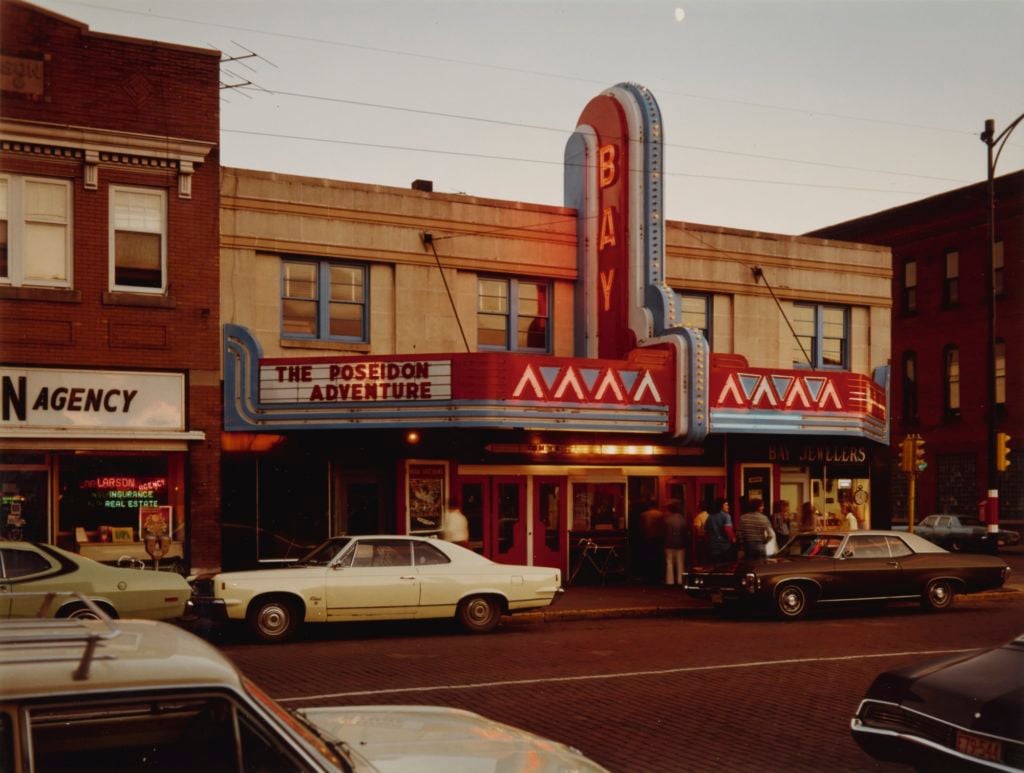
After peaking in 2013, the photography market has come full circle to its 2010 levels—and that's just the start of what we learned.

Tim Schneider

New York’s most recent slate of spring photography auctions still looms large in the rear-view mirror—but their visibility owes much more to their proximity than the size of their profits. After reaching a peak in 2013, photography sales have slid back down to earth. Last week’s totals were the second-lowest tallied over the past eight years.
Photography defenders might call the results solid (if unspectacular) before evangelizing about ample room for growth and tremendous value still to be found by buyers. Critics could be justified in focusing on the category’s tepid performance relative to even short-term expectations, lowlighted by the failure of a few highly anticipated lots, such as Irving Penn’s Cuzco Children, Peru (1948), which was bought in at Bonhams on April 6. As always, there are two sides to every story, depending on your outlook and incentives.
To try to help clarify this spring’s results and the current state of the photography market, we queried the historical data on photography auctions in March and April, dating back to 2010. A handful of noteworthy trends emerged to contextualize the market conversation.
Before unveiling them, let’s establish the other boundaries of our inquisition.
With that context in mind, here are three major takeaways from the data (and one bonus finding, although I use the term “bonus” loosely).

Photos have ridden a wild wave over the past nine sales cycles. After healthy increases in 2011 and 2012, the category went vertical in 2013, reaching a peak of $30.6 million in total sales thanks to a nearly 40 percent year-on-year improvement.
The sudden rise can be attributed in part to a number of record sales. Christie’s two spring photography auctions alone accounted for nearly half the category’s turnover in 2013.
The first auction, from a private collection of modernist photos, generated over $7.5 million, $1.2 million of which was brought in by a single record-setting photogram by Man Ray. A day later, the house’s usual photography sale generated $7.2 million, thanks in part to a new auction record of nearly $664,000 for Robert Frank.
But the glory of 2013 was short-lived. The next two years saw the market give back all the gains made since 2010—then take a roughly 33 percent dive in 2016, skidding to a temporary halt south of $12 million.
It’s been literally up and down since. The photography market made a robust recovery in 2017 before descending again this year to about $15.8 million. That cumulative result means we’re more or less back to where we started eight years ago.
In growth terms, you could argue that things are even gloomier than they look in that chart. One important caveat is that Bonhams didn’t begin holding photography sales in March and April until 2013. Averaged out over the sample period, the new house on this particular block has reliably contributed a little over $500,000 to the category’s total each spring.
Maybe the same consignments (and results) would have materialized at Christie’s, Sotheby’s, and/or Phillips if Bonhams hadn’t entered the game when it did. Notably, during this same period, some sought-after work by photographers that might have added to these totals—such as examples by Cindy Sherman, Richard Prince, and even William Eggleston—were placed in contemporary art auctions rather than specialized photography ones.
But it’s also possible that overall photography sales may have been that much lower post-peak than pre-peak, when the total came strictly from the business done at the top three houses. We’ll never know.
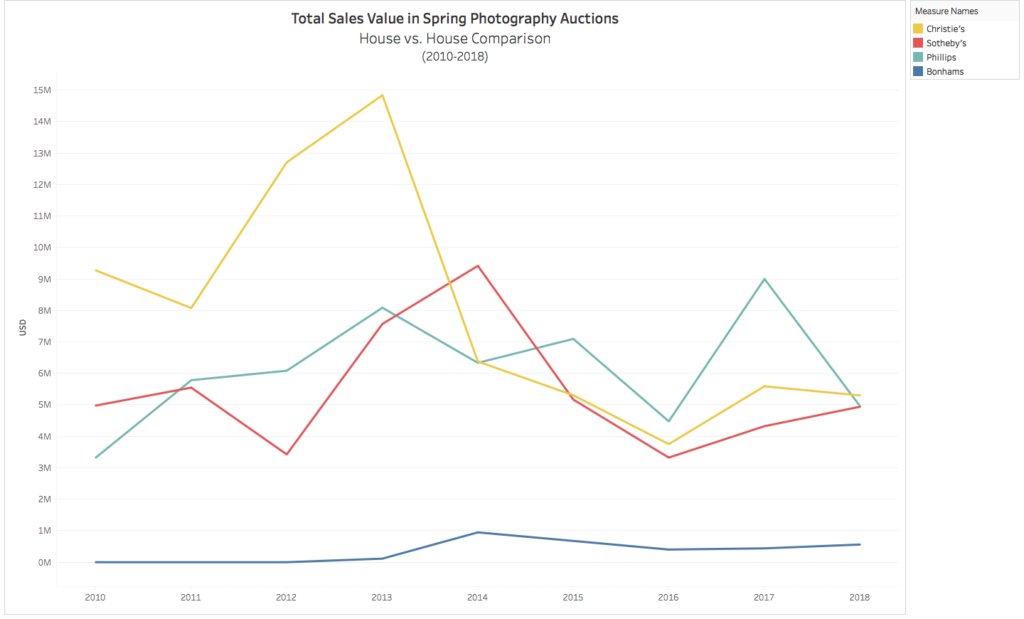
While Christie’s was the undisputed sales champion of the spring photography market from 2010–2013, the house fell far and fast afterward. Originally, its foe Sotheby’s took the throne in 2014. But the reign was short-lived, as Phillips overtook all competitors in 2015—and stayed on top for three consecutive sales cycles.
And although Phillips loosened its grip on the top spot this spring, the three main houses ended spring 2018 in a virtual tie. Christie’s won the season by less than $350,000—the equivalent of one to two good lots. And since (as always) the specter of late or nonpayment means that sales results on the day don’t always translate to money in the bank, it may be fairer to just call this three-way competition a draw for the time being.
However, the scales tilt in Phillips’s favor if we look beyond total sales value to sell-through rate (meaning the rate at which works consigned to the auction house actually sell).
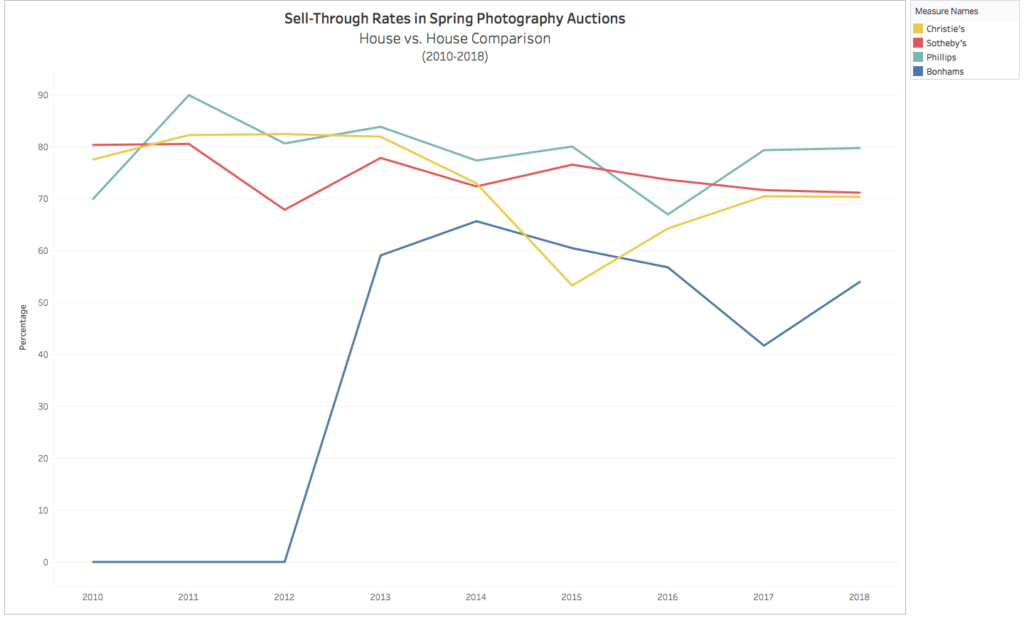
This data reveals that Phillips has consistently been the category’s best at converting consignments into sales during our sample period. It won on sell-through rate in six of the last nine sales cycles. Even in two of its losing campaigns, Phillips still managed to place second (to Christie’s in 2011, and to Sotheby’s in 2016).
Considered together, the two charts show that Phillips has not always been the house to get the loftiest price for individual lots. Again, Christie’s generated the highest sales value in 2018 (barely), but it did so while posting the worst sell-through rate of the top three houses (barely).
Still, if you wanted to be confident that the photograph you’d consigned would sell, Phillips would have been your best bet for most of the past decade. And the house’s performance in total sales value during that time shows that those conversions would still generally have been healthy.
The following chart shows the top 10 artists by total sales value in spring photography auctions since 2010. Penn lords over the others from a perch built $18.5 million high. The only other artist even in his sight-line is Adams, whose lots have hauled in just shy of $17 million.
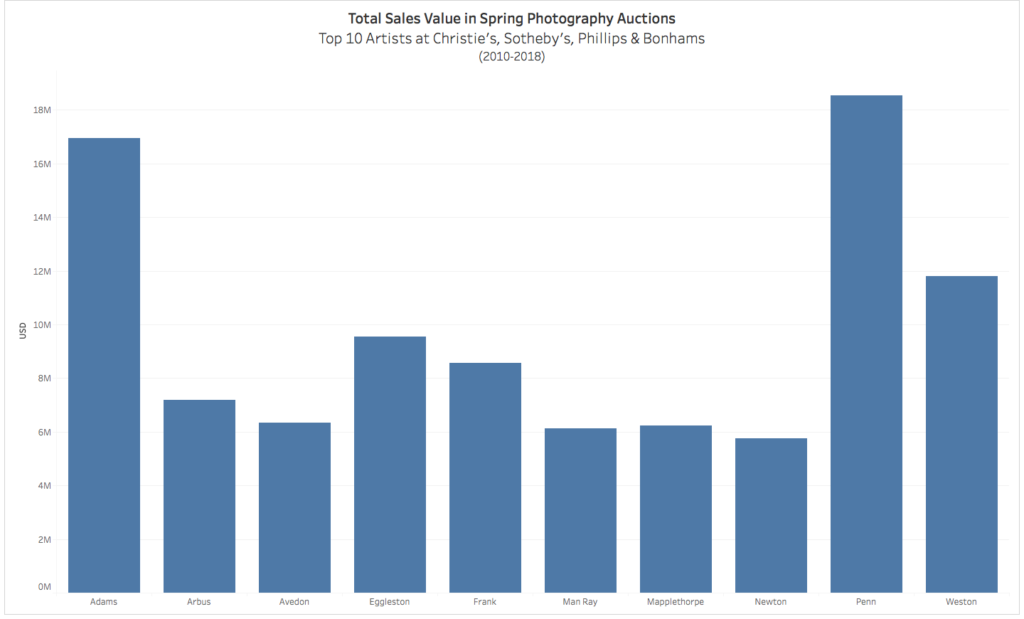
I’d wager that close observers of the photography market won’t have to be nursed out of anaphylactic shock based on this data. Nevertheless, it can still be valuable to see just how far ahead of the rest of the field these two old hands have been since 2010.
You have to drop all the way down to $11.8 million to find third-place Edward Weston—a decrease of more than one-third from Penn’s total sales value. No other photographer even managed to cross the $10 million threshold in this sales cycle over the sampled years.
Sell-through rate tells a broadly similar story, with one interesting wrinkle.
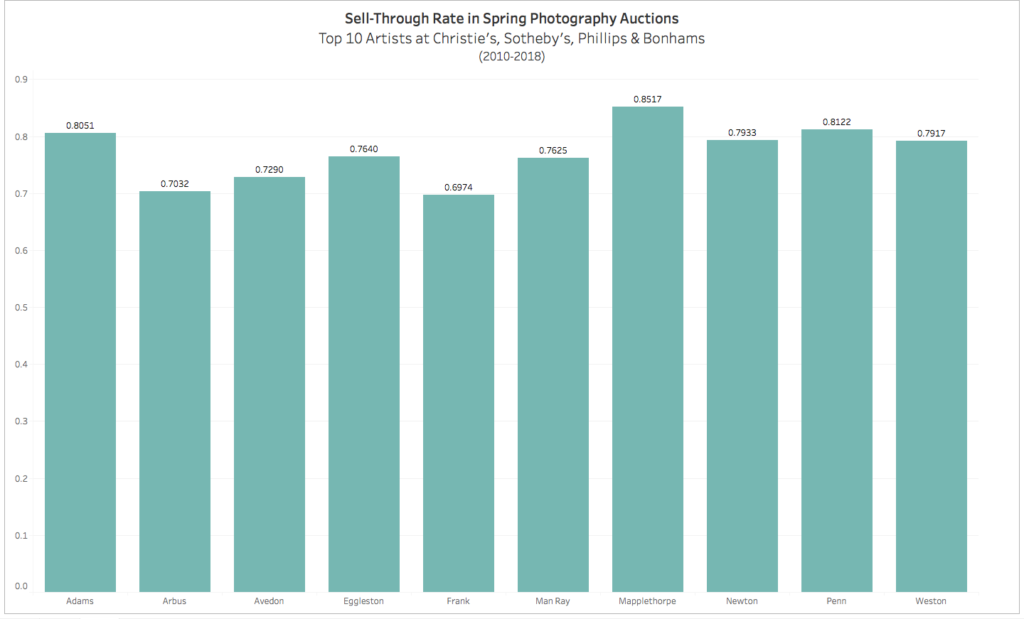
Although Penn and Adams take two of the top three spots in sell-through rate, both lose to Robert Mapplethorpe by a significant margin. His 85.2 percent sell-through rate dwarfs the rest of the top 10 (relatively speaking), even as he qualifies for no better than eighth place in the rankings for total sales value.
In many, if not most, auction categories, it’s common to find a strong correlation between high prices and likelihood of sale. But the two metrics don’t necessarily map directly onto one another. And that continues to provide at least some uncertainty (and excitement) in the auction results business.
Which is good, because some other things are depressingly predictable, like our final bonus finding….
Below is a chart created by organizing the same top 10 artists in the previous item by gender. The results are about as slanted (and predictable) as can be.
Among the top 10 photographers in the spring sales cycle, men generated about 12.5 times as many sales dollars as women, roughly $90 million to $7.2 million. In fact, even saying “women” (plural) seems slightly disingenuous, since the only artist in the cohort is Diane Arbus.
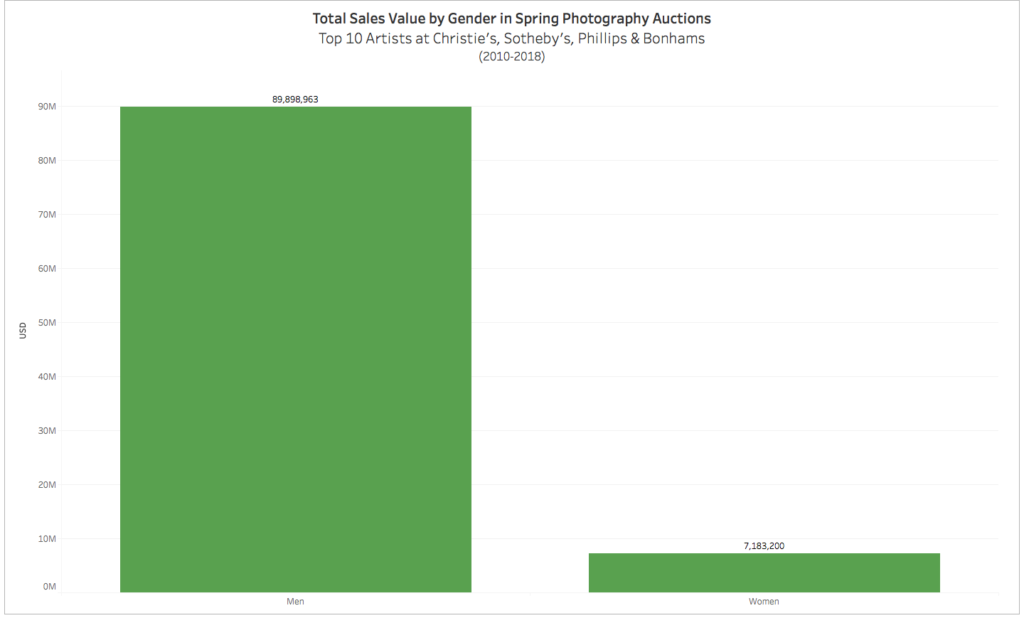
If you’re looking for progress on the gender equality front, the disparity has been less stark if we update the time horizon to works sold since Bonhams entered the fray in 2013. In that case, men only (“only”) outsold women (meaning Arbus) by a factor of 11: $44.3 million to $4.1 million.
But this qualifies as cold comfort at best, I expect. Maybe in another seven to 10 years, the results will be far less glaring. Or maybe they will just be still more evidence that, in the photography market as in other spheres of life, the most significant changes tend to happen from the bottom up, not from the top down.